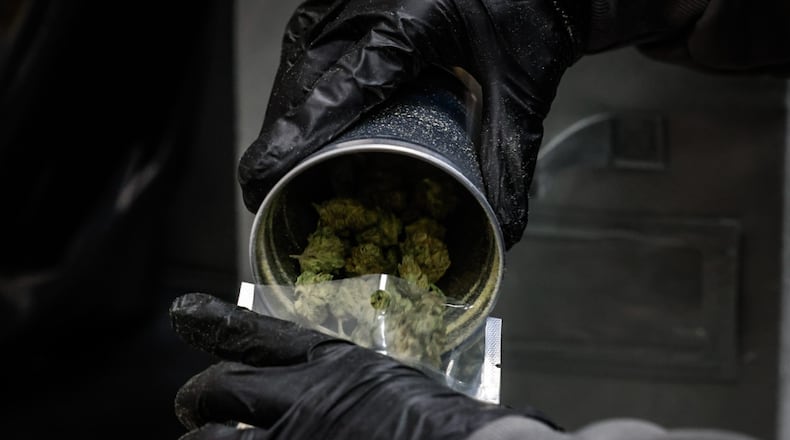If Issue 2 passes, it would create a recreational marijuana market in Ohio for adults aged 21 years or old. As written in the statute, the newly established recreational market would largely be covered by expanding the licensing opportunities for cultivators and dispensaries that already support Ohio’s medical marijuana program.
For cultivators, the sites where marijuana plants are grown and harvested in the state, Issue 2 would grant the state’s larger facilities the chance to either expand their current premises or to expand to three separate facilities in order to increase their output; smaller cultivators are granted the same opportunity but allowed only one additional license instead of three. Additionally, Issue 2 proposes handing out 40 cultivating licenses to entirely new businesses.
For dispensaries, the licensed sites that can legally distribute marijuana, the idea is similar. Issue 2 would give existing dispensary sites the option to take one license to expand their capacity, while the state doles out 50 new licenses to entirely new applicants.
While there were several government policy groups that spent big for Issue 2, including The Marijuana Policy Institute out of Washington, D.C. ($275,000) and the Youngstown-based, grassroots Ohio Organizing Collaborative ($152,192), the rest of the CRMLA’s big contributions came from either individual donors or industry players who could potentially play a part in Ohio’s recreational marijuana market.
The campaign’s largest industry contribution came from FarmacueticalRX LLC, a Columbus-based marijuana company that owns a cultivation site in Ohio along with a processing center, which takes the marijuana plant and turns it into various products allowed under Ohio’s medical marijuana code. The company donated $250,000 to the CRMLA.
The contribution trend was supported by Curaleaf, a company based out of Las Vegas that owns one cultivation site, two dispensaries and a processing site in Ohio and gave $200,000 to the CRMLA. The bulk of CRMLA’s contributions that came in over $10,000 came from a variety of other marijuana companies or their executives.
Two of those contributions have local ties. Dayton’s Certified Cultivators Corp., which owns one cultivation site and one processing site under the same name, donated $25,000; while Pure Ohio Wellness, a Springfield company with one cultivation site, one processing site and two dispensaries, donated just over $26,000 in separate donations from the company and its owner.
Scott Milburn, a spokesperson for Protecting Ohio Workers and Families, offered a cynical view of CMRLA’s industry backers: “Is anybody surprised that a $30 billion industry…is outspending the people fighting to keep our kids, workplaces and highways safe?”
Tom Haren, spokesperson for the CMRLA, saw the contributions differently.
“It’s not about industry benefit,” Haren said. He argued that Issue 2 would benefit “every single Ohioan” by driving out the illicit marijuana market, creating additional tax revenue, further decriminalizing marijuana possession and providing greater access to folks who have a medical need but can’t get marijuana through the state’s current medical program.
CMRLA’s finance reports also showed a long list of small, individual contributions, over 1,000 of which came from Ohioans.
On Protecting Ohio Workers and Families’ side of things, there were only 29 contributions in total, the largest of which came from the Ohio Manufacturers Association and its executives, which oppose Issue 2 on the grounds that a recreational marijuana program in Ohio might deplete the state’s drug-free workforce. The OMA donated $101,000 to the fight against Issue 2, which was trumped by a $200,000 donation by OMA board member Angela Phllips, the CEO of Phillips Tube Group in Middletown.
The bulk of Protecting Ohio Workers and Families’ contributors come from industries throughout Ohio. The campaign also had ties to local politicians, including a $10,000 contribution from business-first Sen. George Lang, R-West Chester and Sen. Bob Hackett, R-London, who represents Clark County.
About the Author

